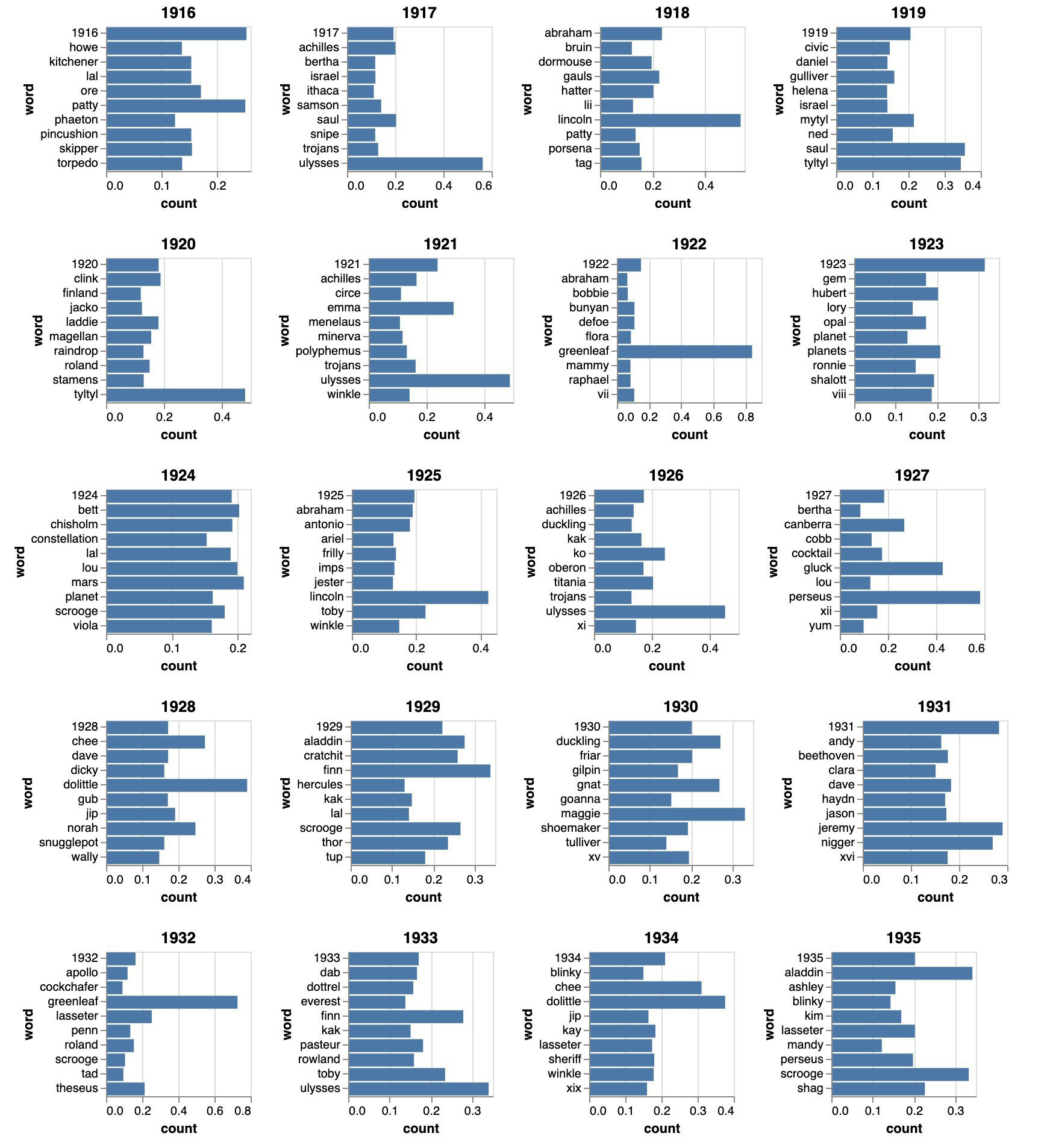Voting in the 2019 @dhawards is now open! Go and check out all the cool #DigitalHumanities projects from around the world. And while you’re there, you might like to vote for my #GLAMWorkbench in the ‘Tools’ category!
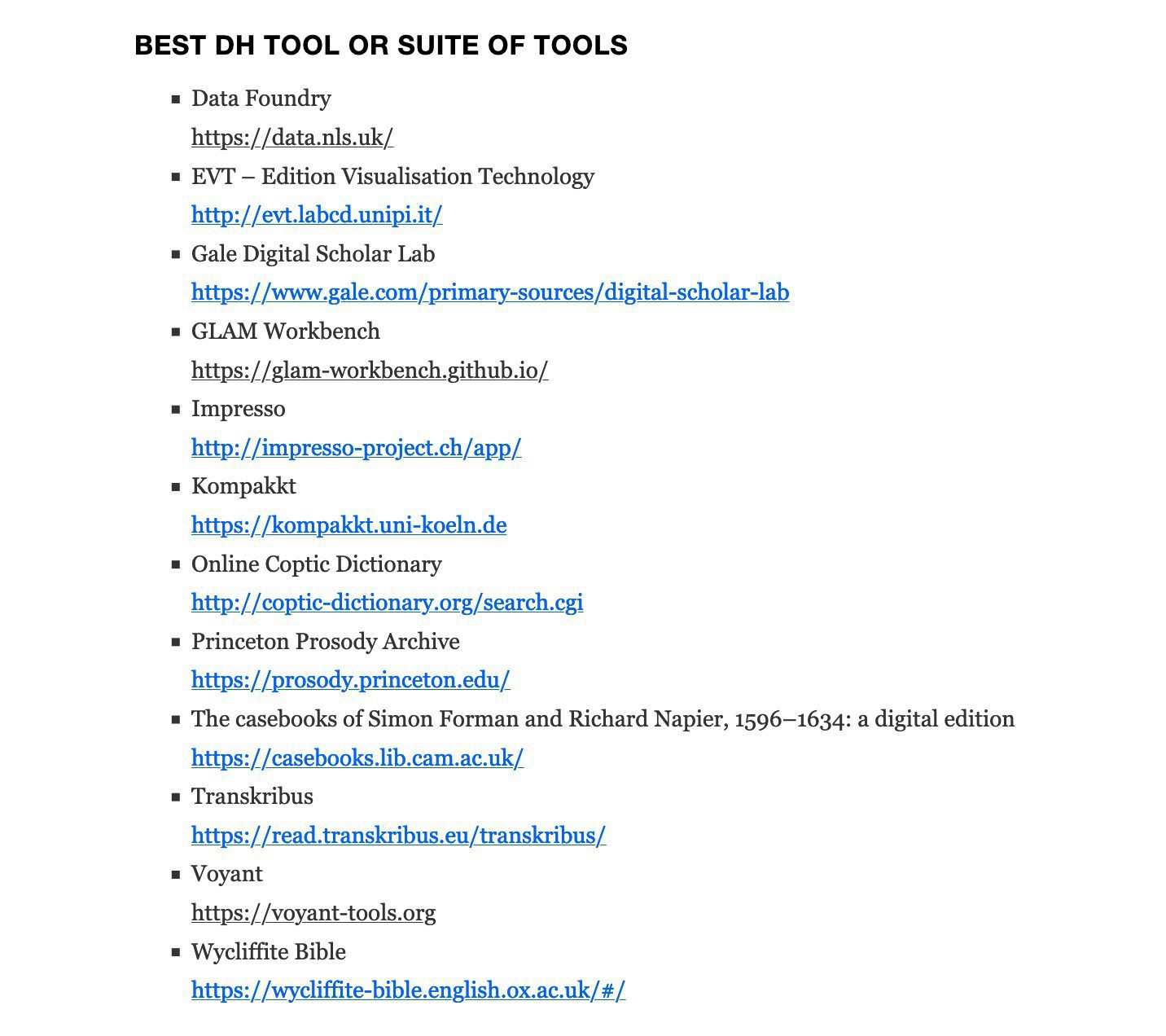
Voting in the 2019 @dhawards is now open! Go and check out all the cool #DigitalHumanities projects from around the world. And while you’re there, you might like to vote for my #GLAMWorkbench in the ‘Tools’ category!

Gathering together videos of past presentations. Here they are on YT: https://www.youtube.com/playlist?list=PLAclcciEeCD3INz0o1t_E9-bkW_BWTmSv and Vimeo: vimeo.com/showcase/…
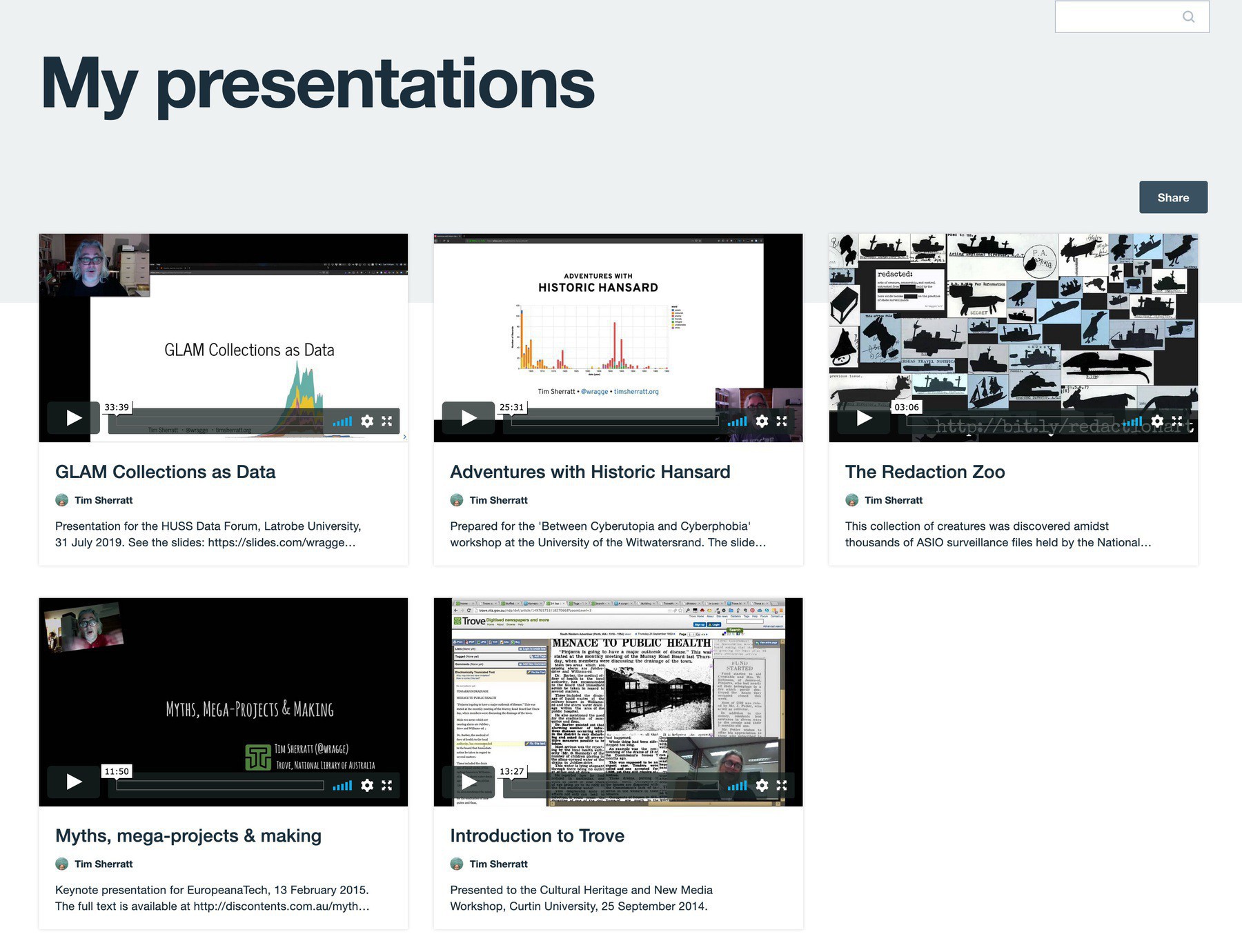
Archived via Zenodo – ‘Inigo Jones: the weather prophet’ – exploring our desire for certainty amidst a highly variable climate. doi.org/10.5281/z…
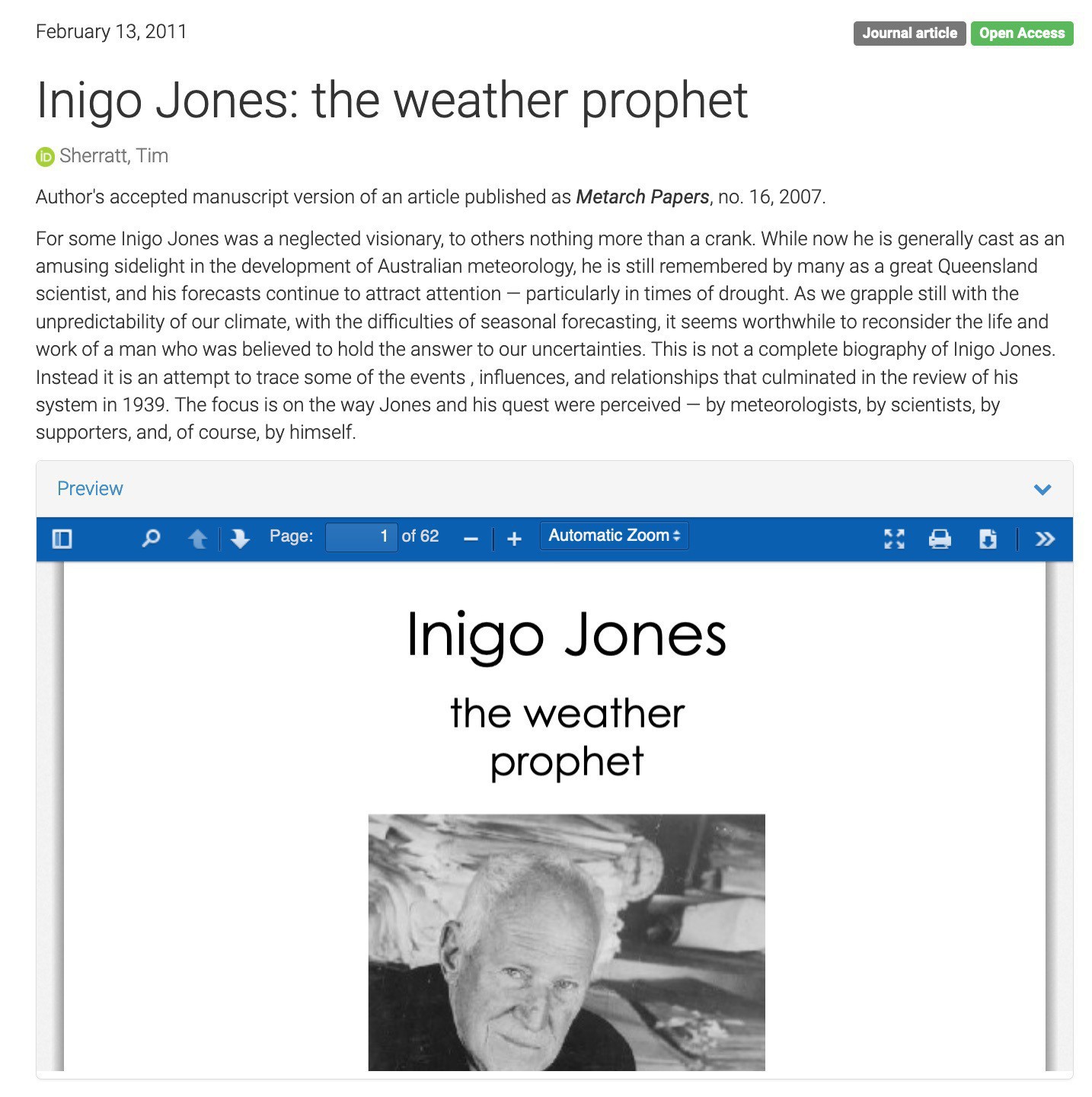
Archived via Zenodo – ‘Civilization versus the giant, winged lizards’ – a thing I wrote about the climate emergency in 2006. doi.org/10.5281/z…
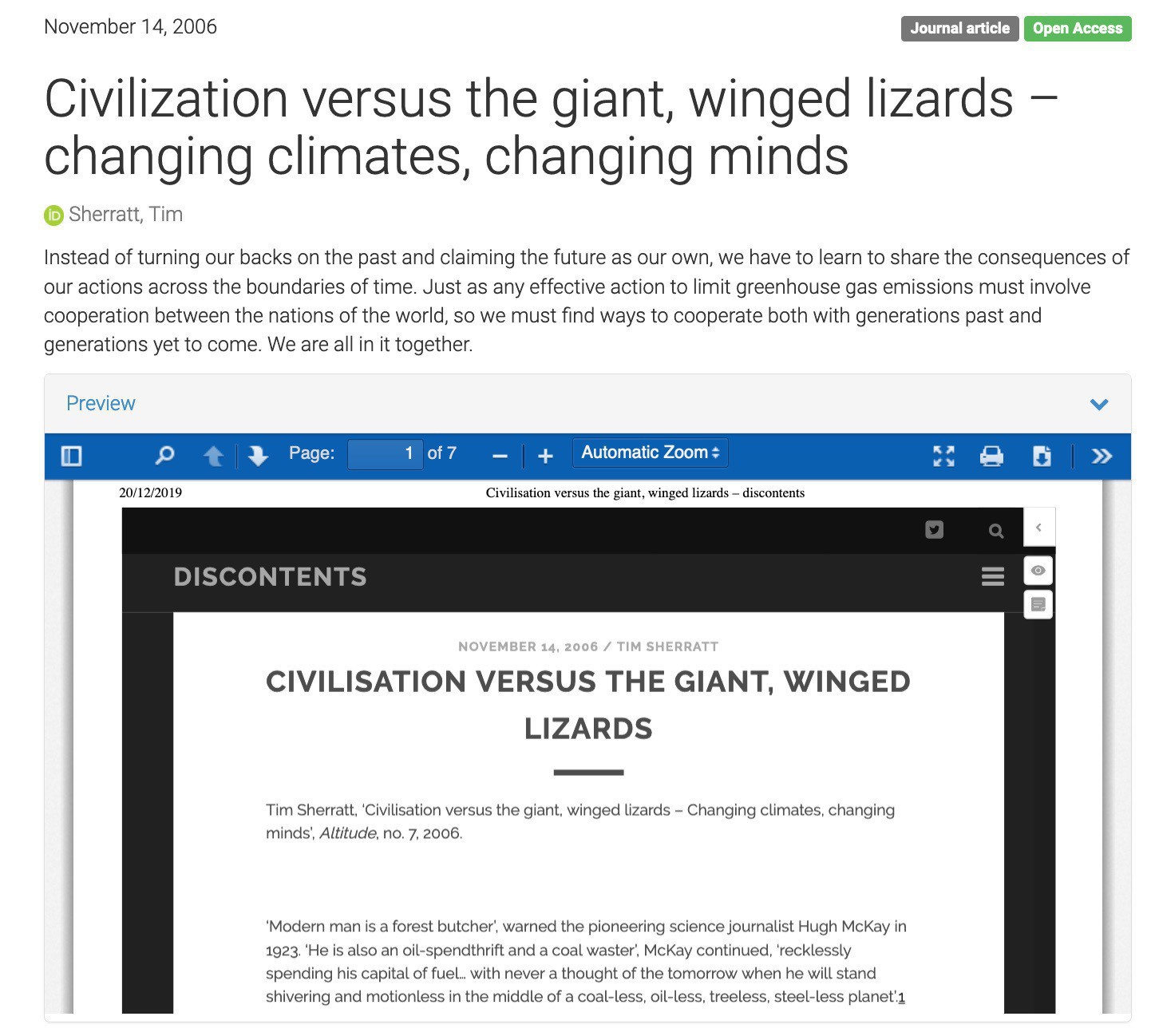
One of my favourite things this year was finally publishing ‘The People Inside' with @baibi — describing the start of our @invisibleaus experiments eight years ago with records relating to the White Australia policy held by @naagovau. doi.org/10.5281/z…
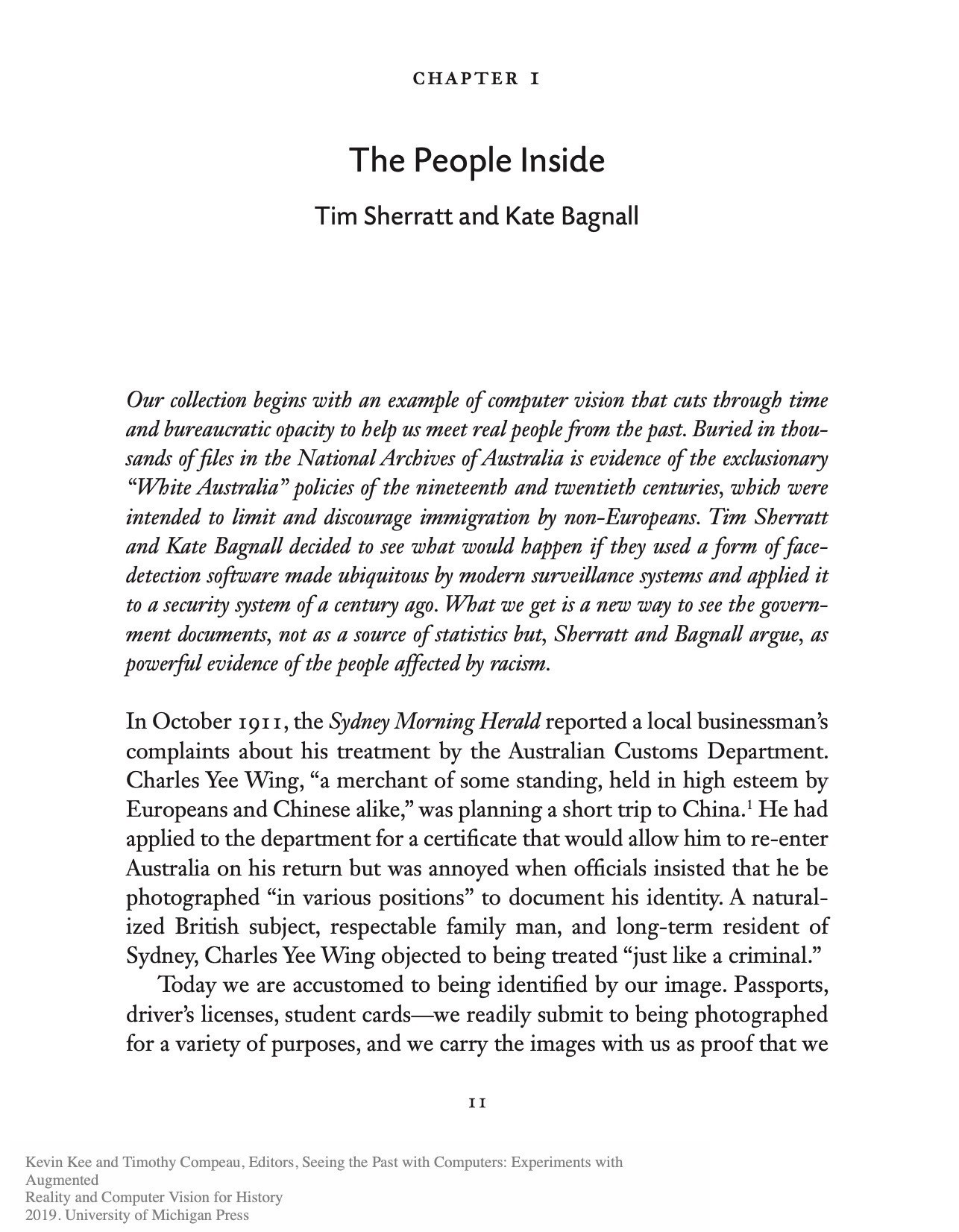
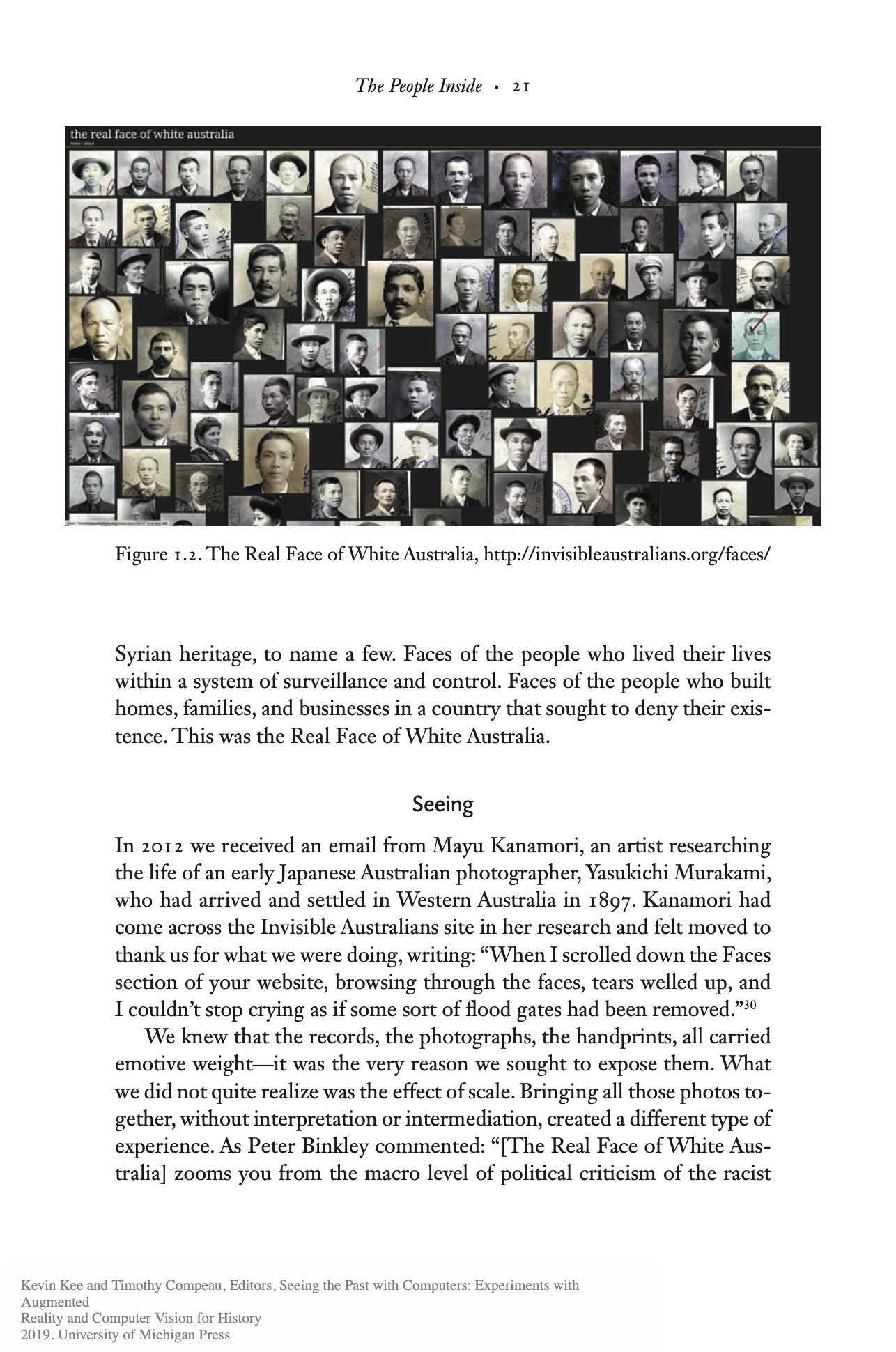
New #GLAMWorkbench section with examples of how to get random-ish works and newspaper articles from @TroveAustralia. #dhhacks
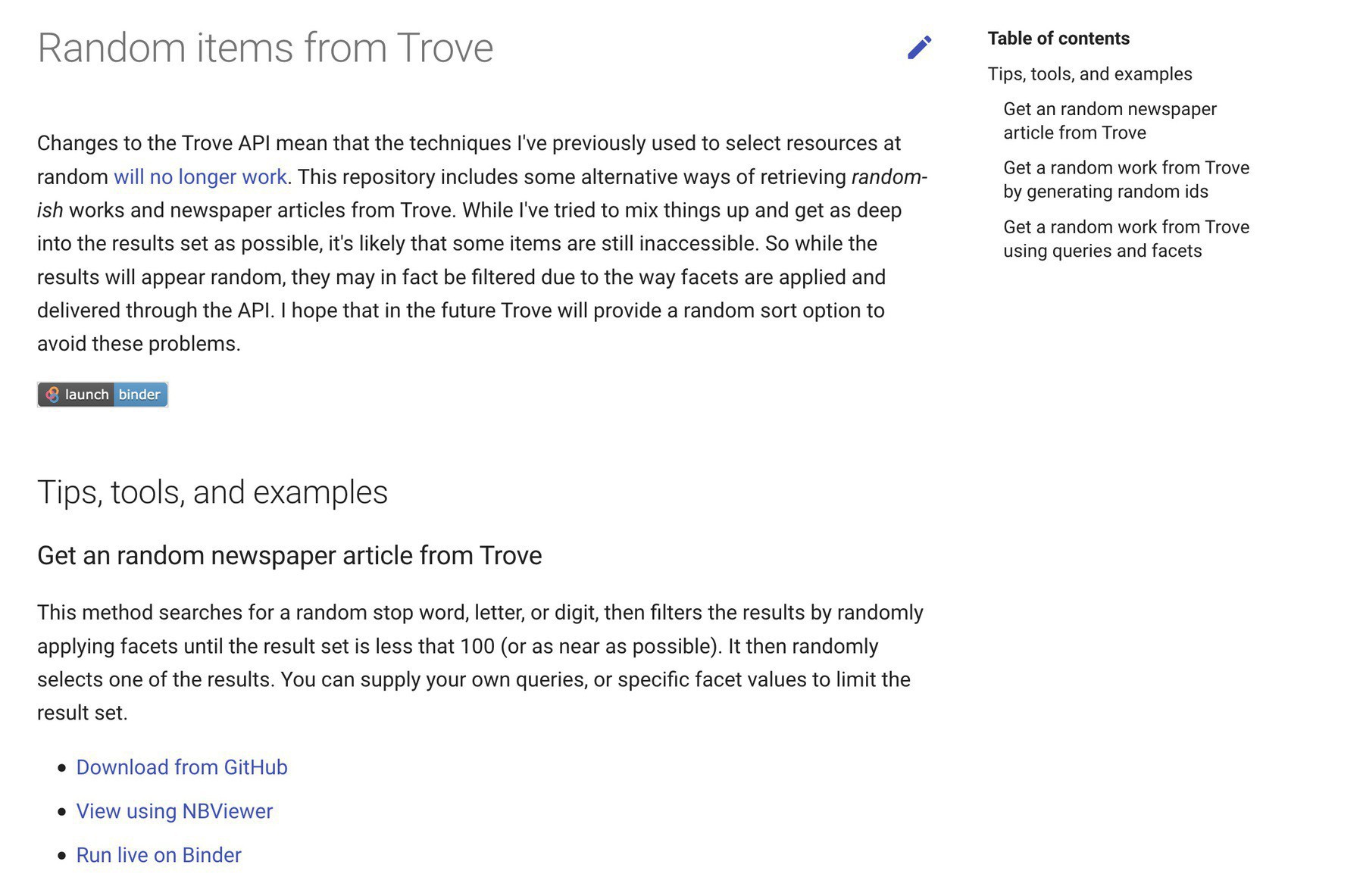
Did you make a DIY Exhibition from a @TroveAustralia list using my GitHub starter kit? If so, it’s probably broken. Never fear, here’s how you can upgrade your exhibition to use version 2 of the Trove API. #DHHacks
Today version 1 of the Trove API was decommissioned. As I explained elsewhere, this meant that a number of Trove Twitter bots also died. The problem is that version 2 of the API provides no easy way to randomly select records. Bots, and other apps that share random content, require major reworking. After a lot of experimentation, I’ve settled on a few methods for selecting random-ish results. They’re far from perfect, but they seem to work reliably.
Updated my NSW public holidays data to include a few extras proclaimed by the government: nbviewer.jupyter.org/github/wr…
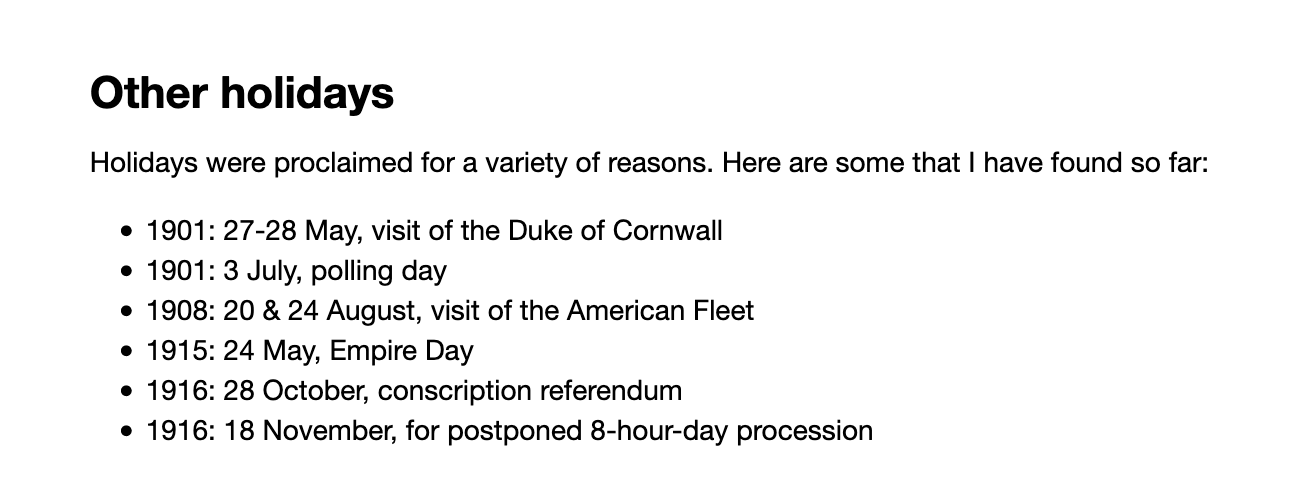
tl;dr Version 1 of the Trove API will be discontinued soon so Trove Twitter bots need to be upgraded. Unfortunately, Version 2 of the Trove API doesn’t support the random selection of resources, so the current behaviour of many bots will change. The problem In January 2018, I created a series of templates on Glitch that made it easy for people to build their own Trove Twitter bots. And they did!
Over the last few weeks I’ve been exploring ways of recording dates for 70,000 digitised pages from Sydney Stock Exchnage records in the @TheANUArchives. Here’s the progress so far…
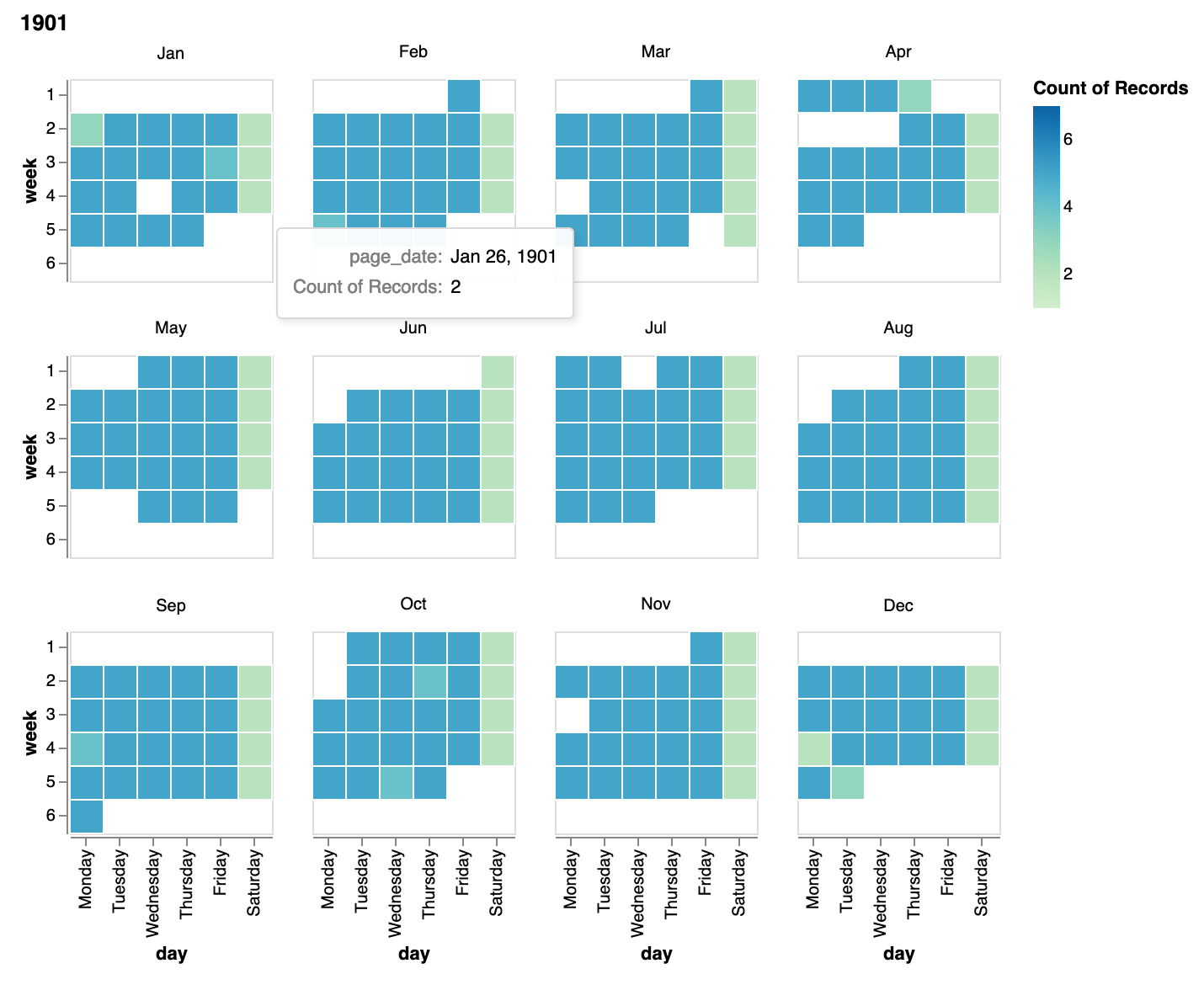
Here’s my attempt to calculate NSW holidays from 1900 to 1950. It’s probably incomplete, but it’s a start… nbviewer.jupyter.org/github/wr…
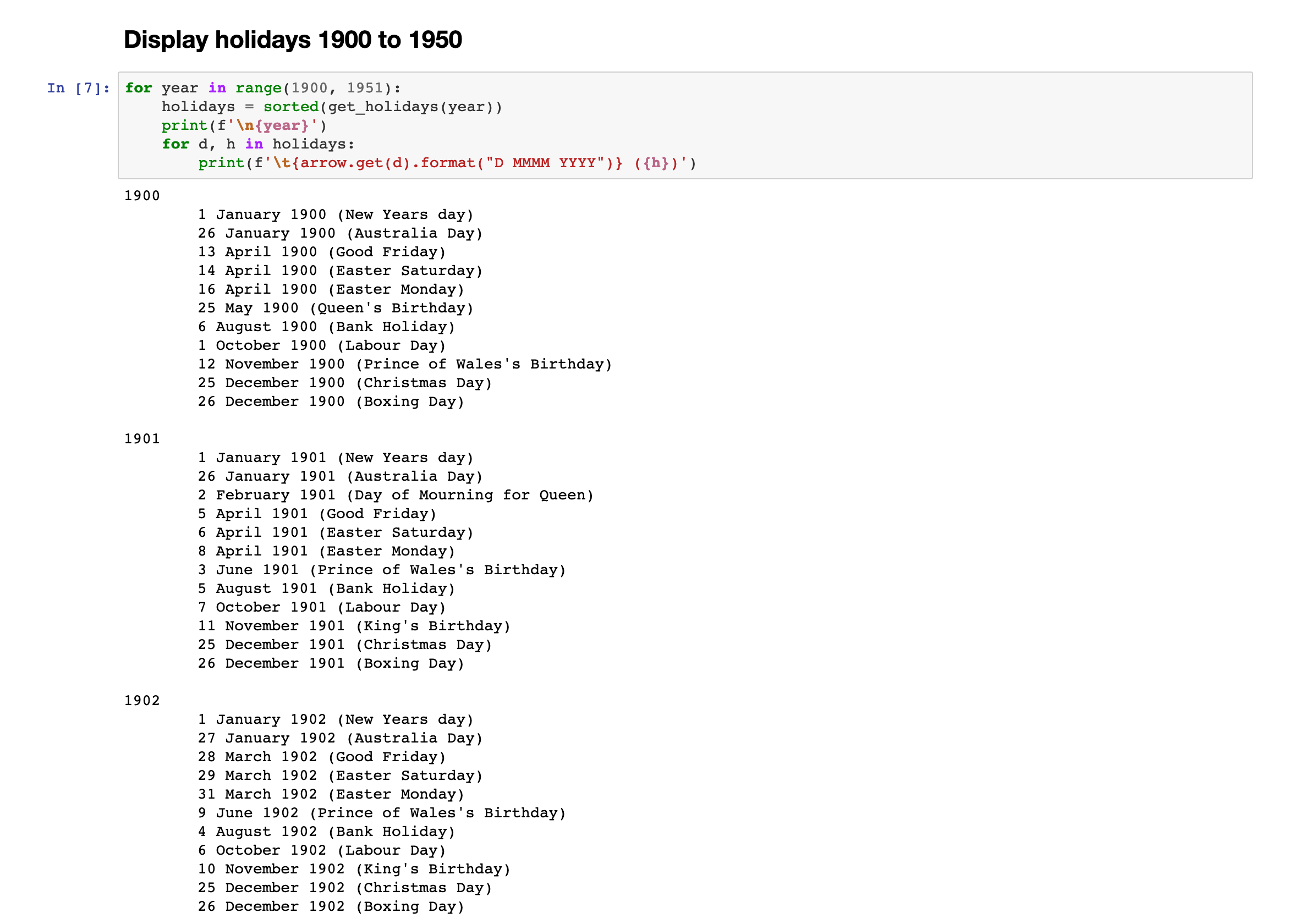
A couple of years ago I gave a talk in which I tried to justify what I do as research. I was going to turn it into an article, but never did. So here’s ‘The multiplication of contexts’ as a blog post.
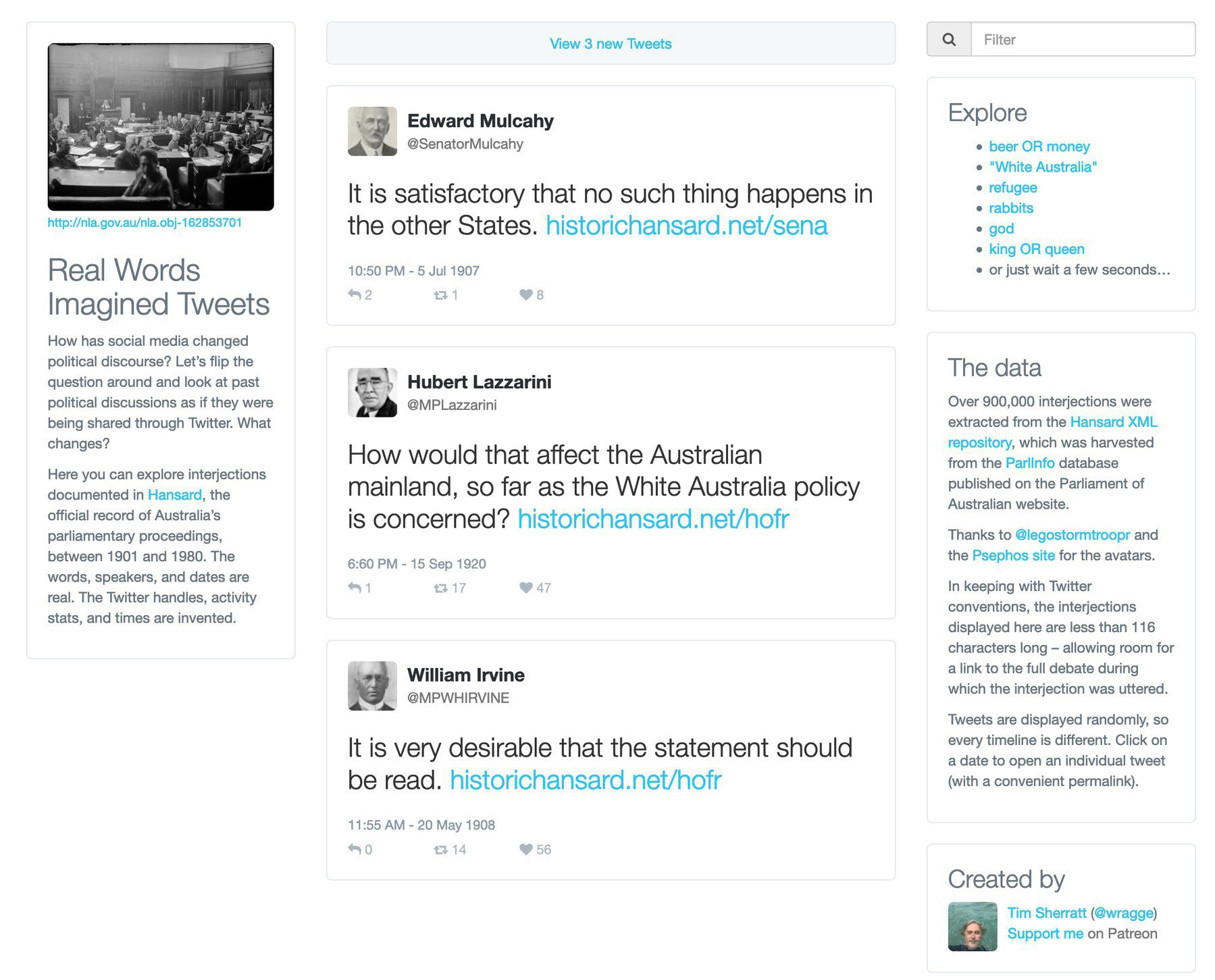
The @naagovau RecordSearch section of the #GLAMWorkbench has been updated with more notebooks to help you get Australian archives data in a usable form. glam-workbench.github.io/recordsea… Useful for #twitterstorians, #ozhist, & #govhack!
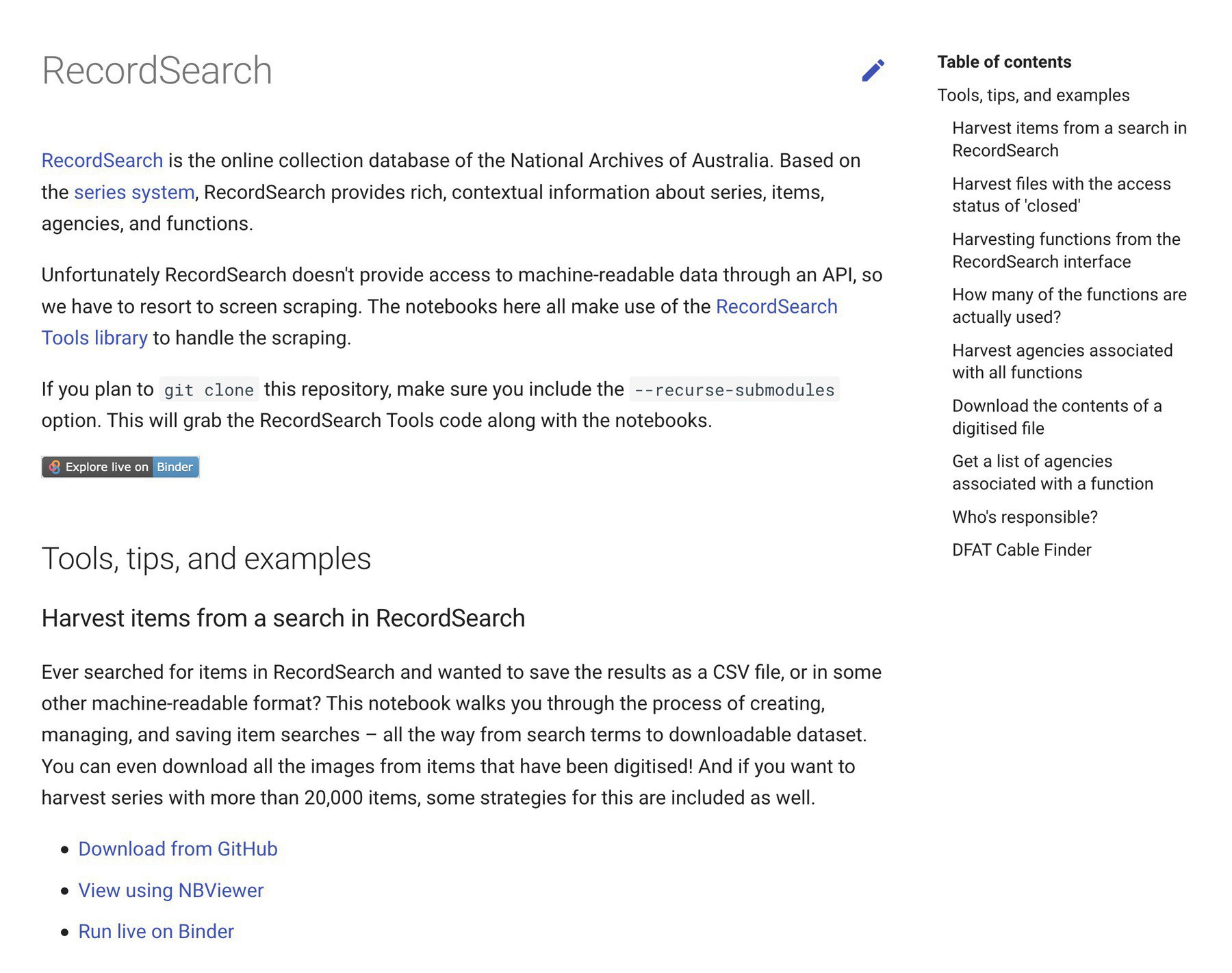
Crikey, my notebook for getting useful data out of @naagovau keeps growing! Now with sections on tackling large series, and harvesting ALL the images from digitised files. https://nbviewer.jupyter.org/github/GLAM-Workbench/recordsearch/blob/master/harvesting_items_from_a_search.ipynb
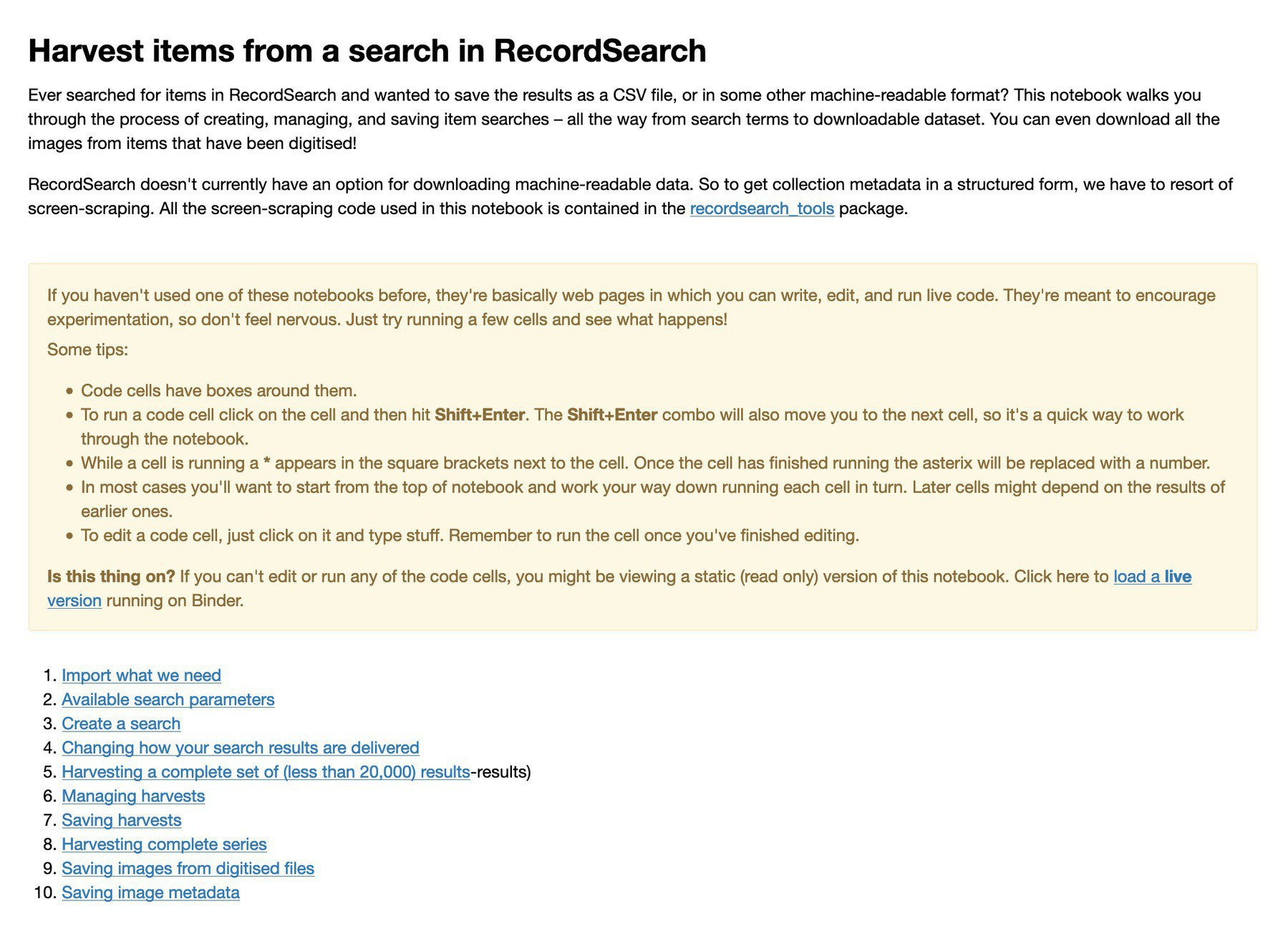
Want to save searches for items in @naagovau’s RecordSearch as CSVs for exploration & analysis? This notebook walks through the process of constructing, managing, and saving data harvests. #dhhacks
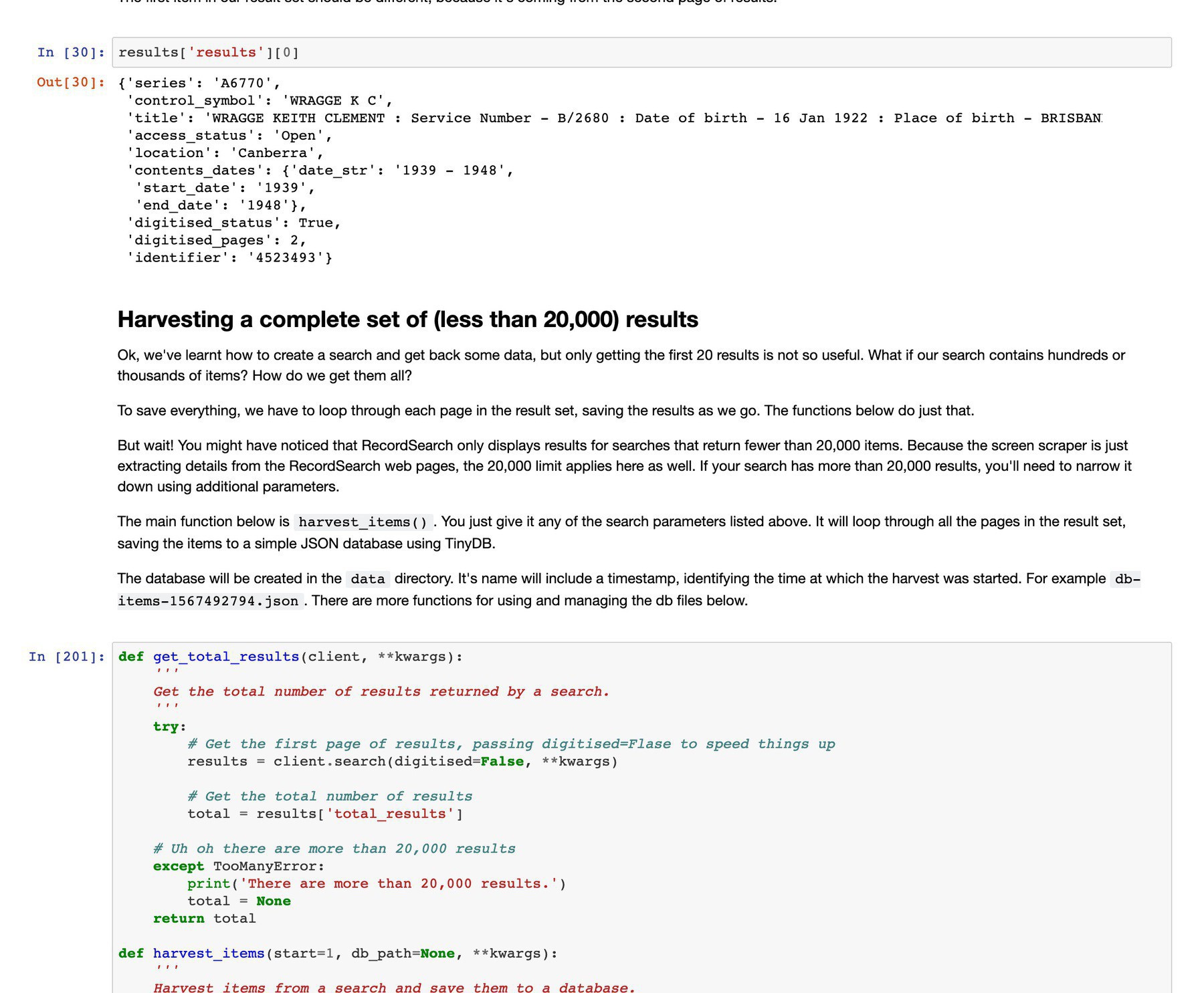
I’ve updated my harvest of OCRd text from digitised journals in @TroveAustralia. The complete dataset now includes 33,035 issues from 720 titles – about 8gb of text to explore. Details in the #GLAMWorkbench: glam-workbench.github.io/trove-jou… #dhhacks
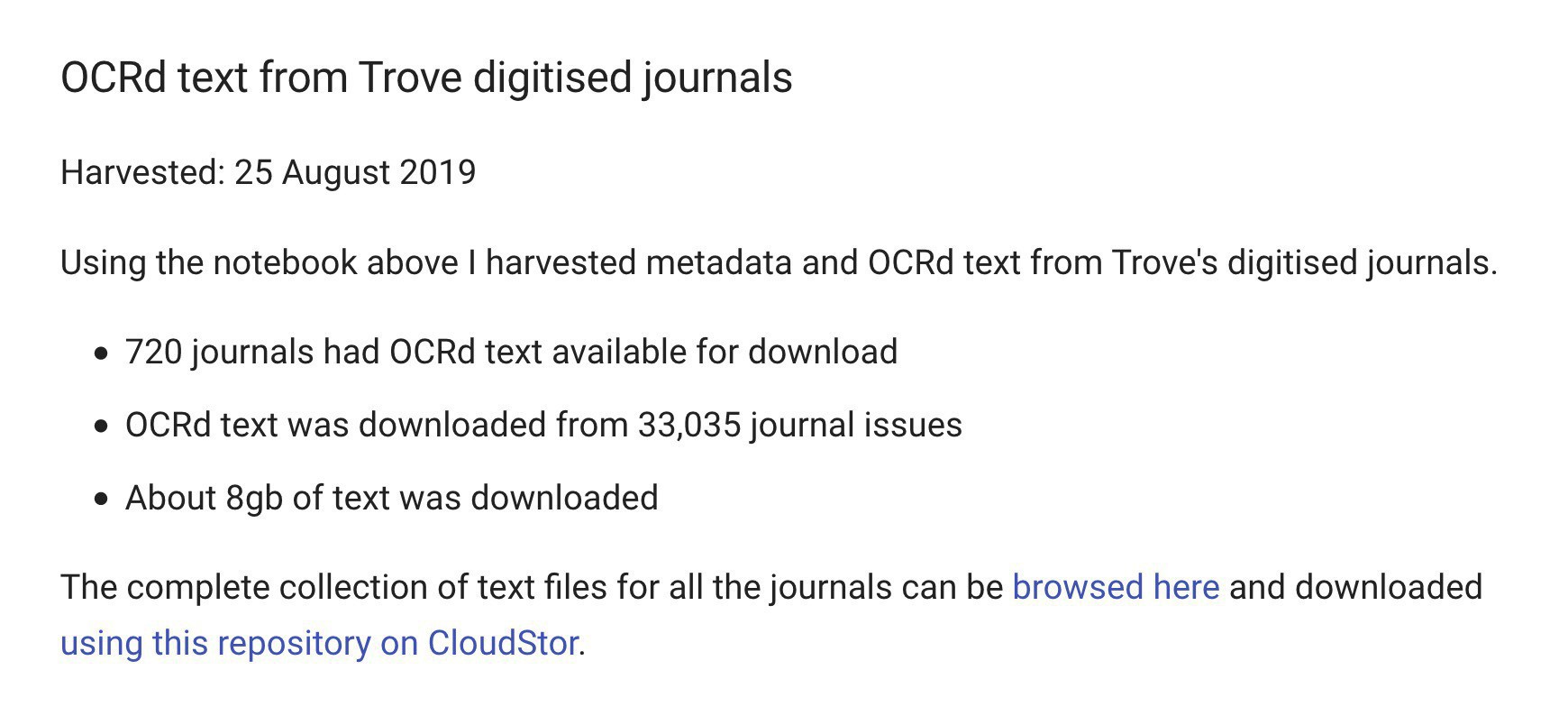
My app to browse & search @TroveAustralia’s digitised journals has been updated! Since 4 July, 112 new titles & 86,211 new articles have been added to Trove. Many of these new titles are parliamentary papers. Explore here: trove-titles.herokuapp.com #dhhacks
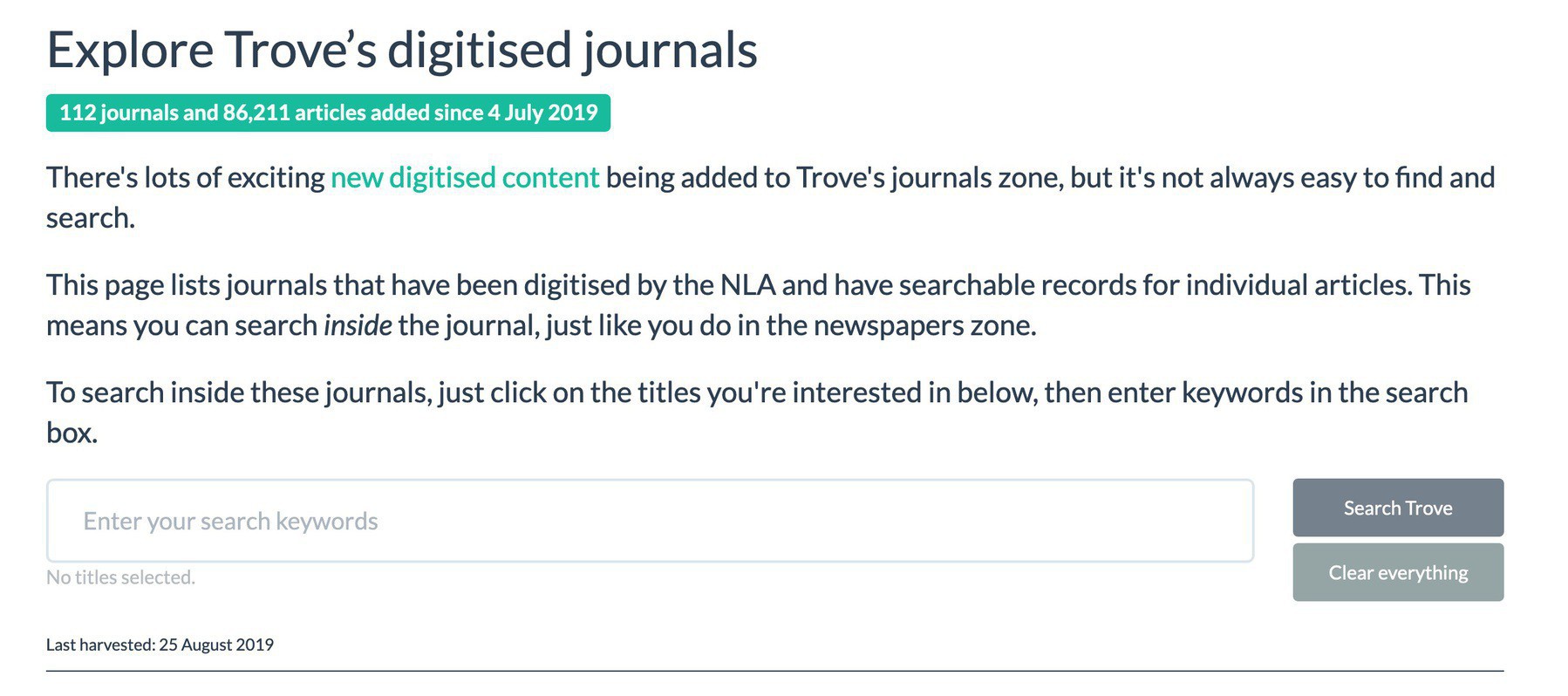
Another WIP notebook in need of additional documentation… This one explores the stats around volunteer correction of OCR errors in @TroveAustralia’s newspapers. More to come!
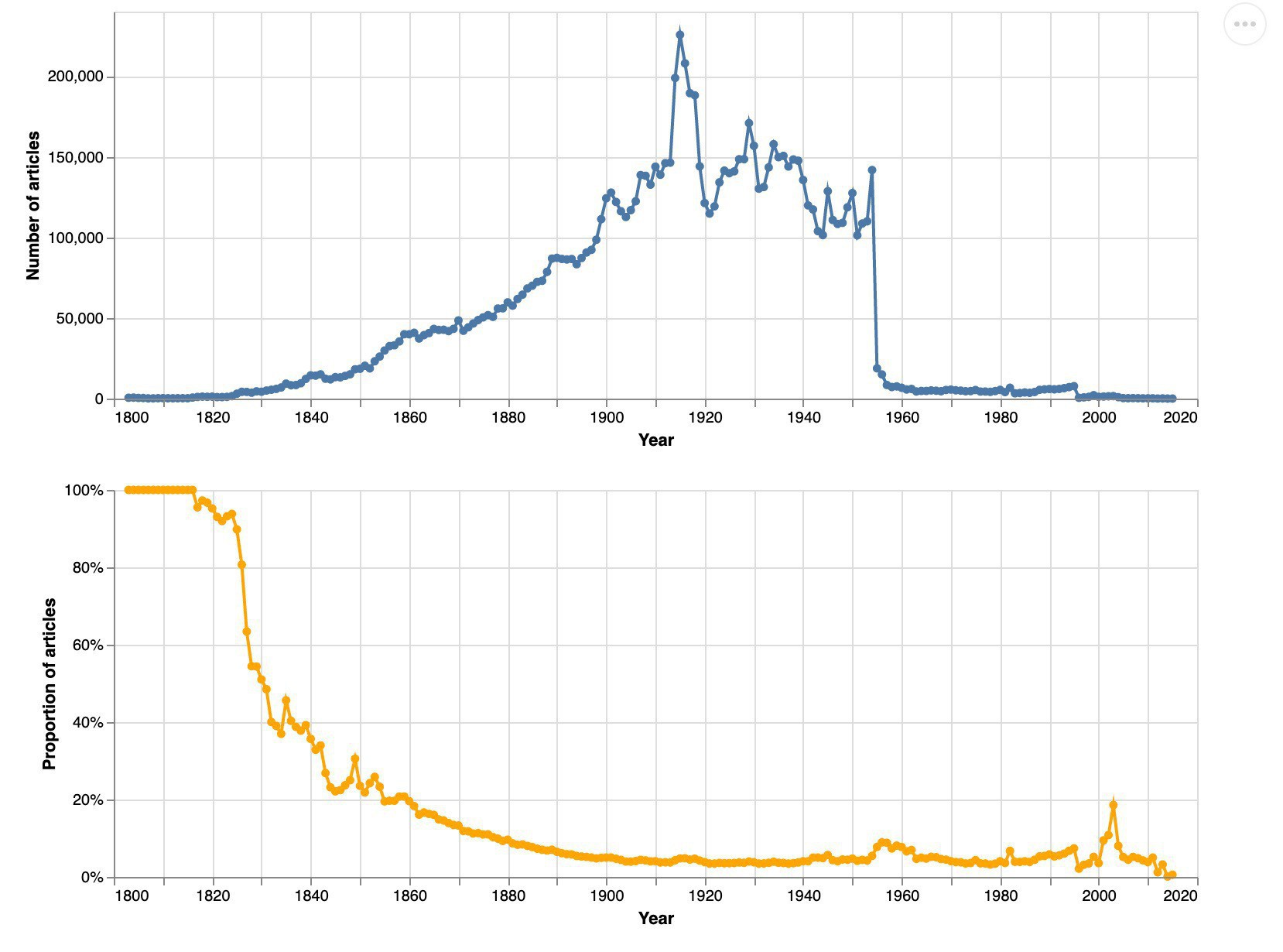
And this notebook uses TF-IDF to explore the OCRd text of a digitised journal from Trove. Get the top TF-IDF scores for each year across a journal’s life and see how they change. More documentation coming!
